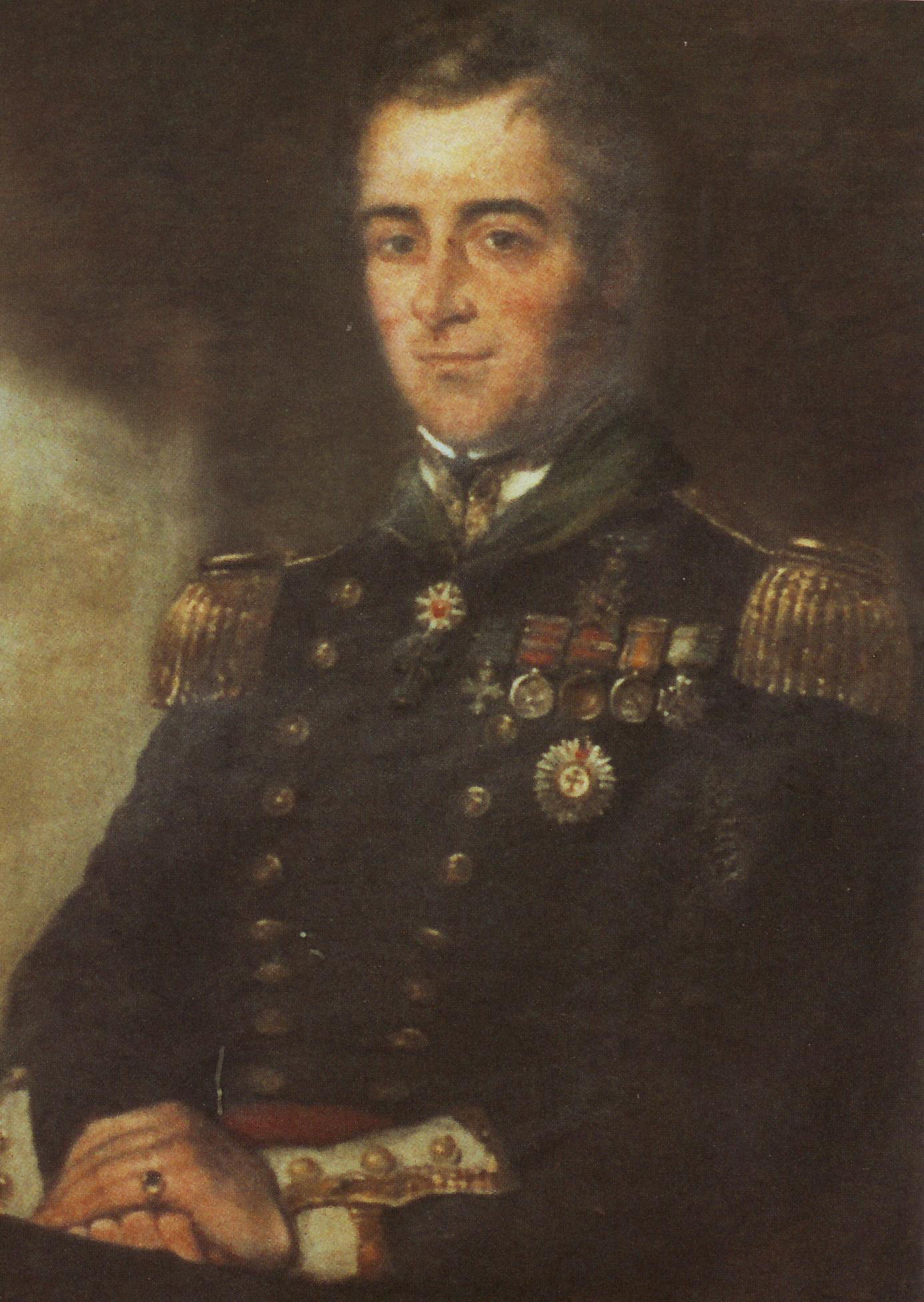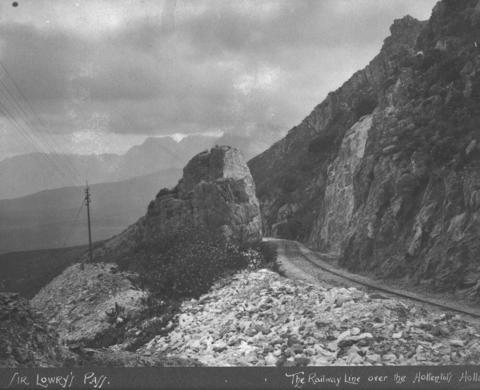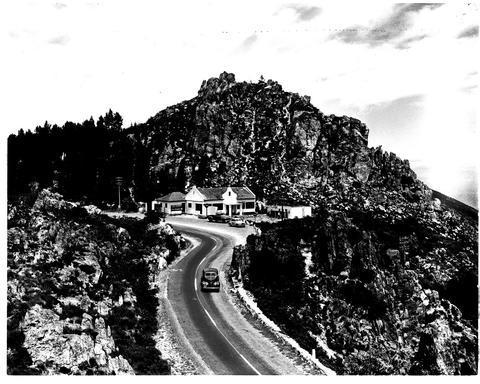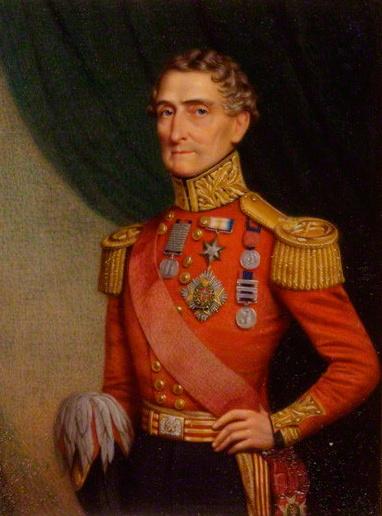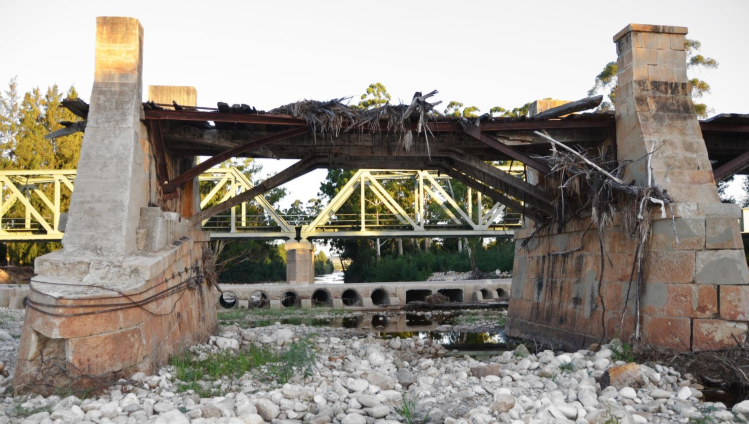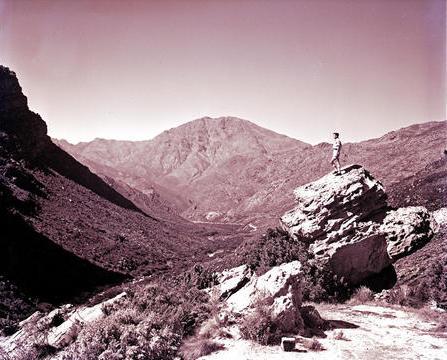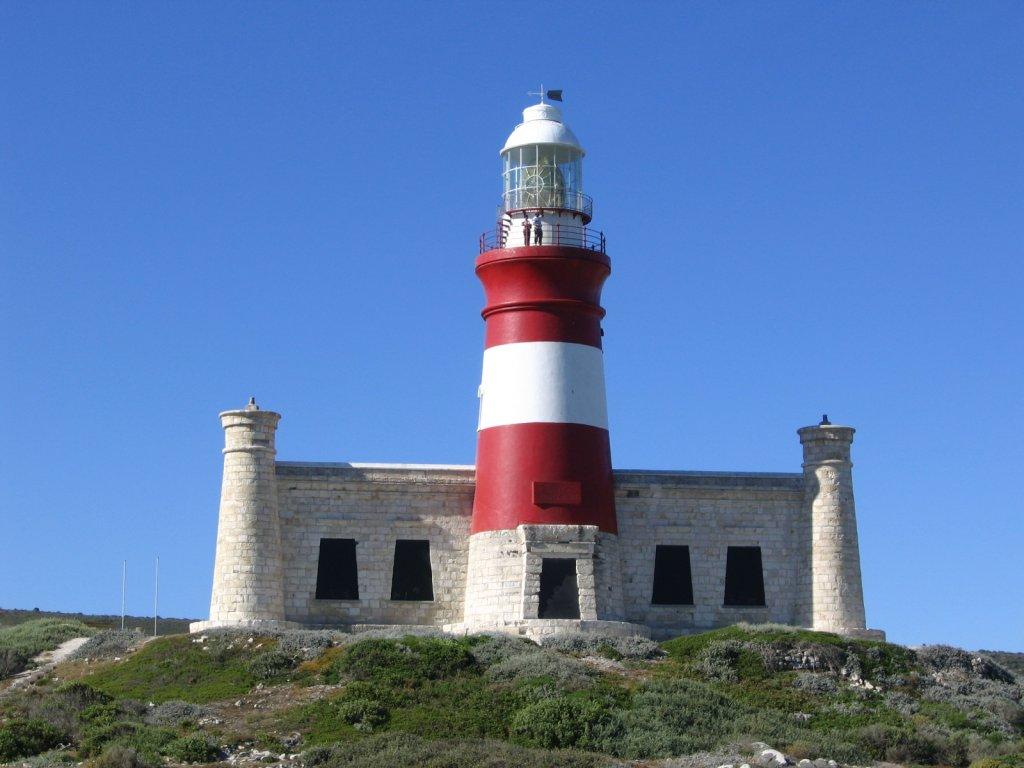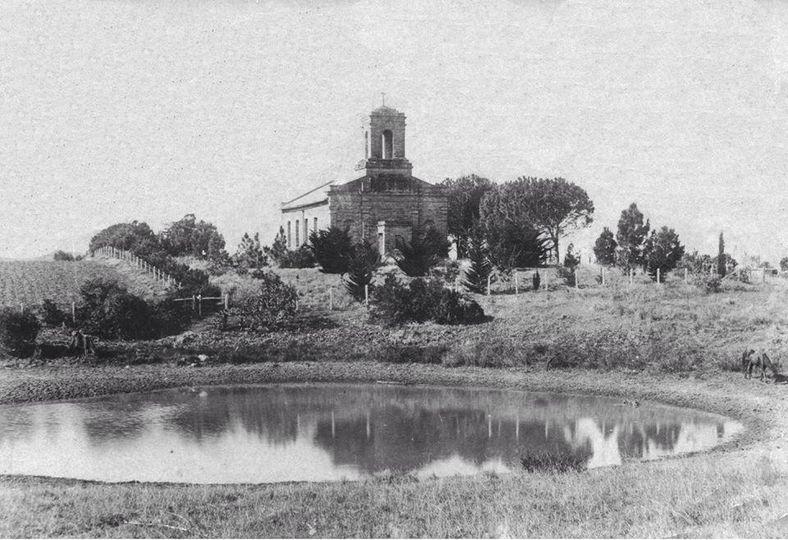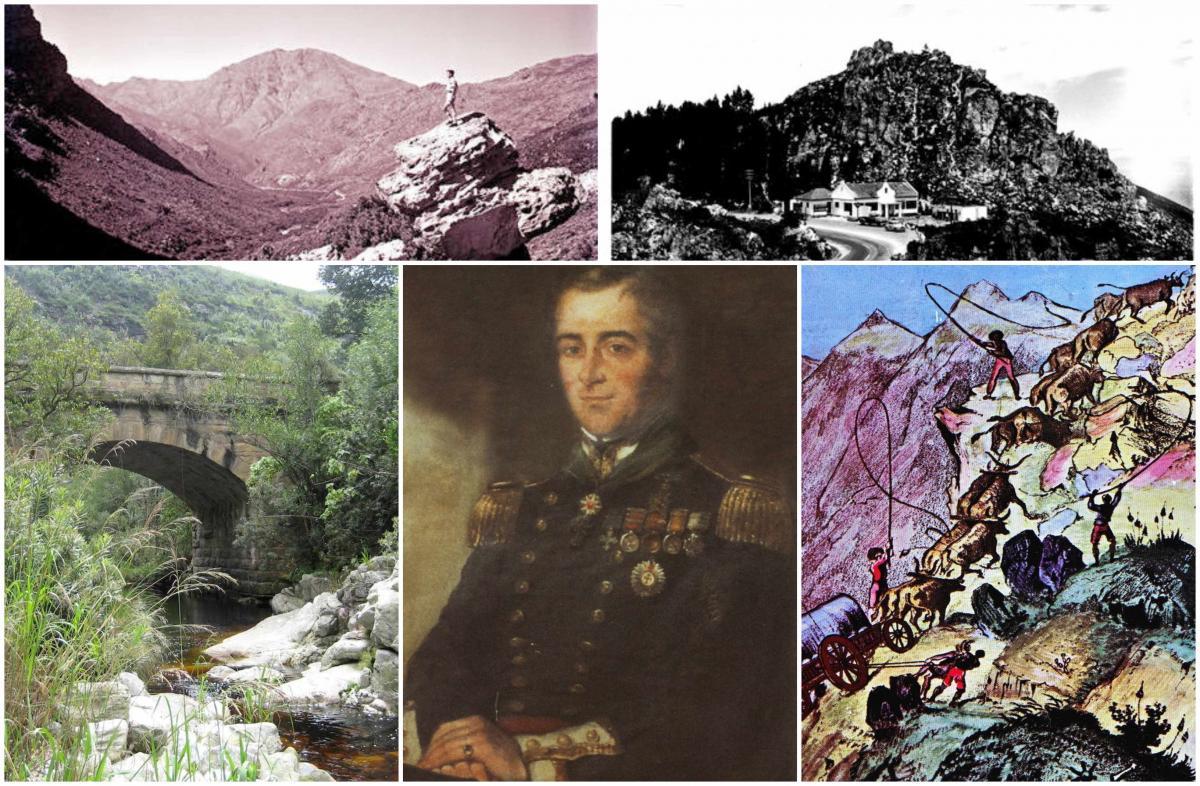
Disclaimer: Any views expressed by individuals and organisations are their own and do not in any way represent the views of The Heritage Portal. If you find any mistakes or historical inaccuracies, please contact the editor.
In the article below, Tony Murray reveals the story of Charles Cornwallis Michell, an engineer who contributed so much to the Cape Colony. The piece first appeared in the publication 'Past Masters: Pioneer Civil Engineers who contributed to the growth and Wealth of South Africa'. Click here to view the stories of other great engineers.
South African civil engineers can look with pride to the father of civil engineering in their country. Not only was Charles Michell a competent and energetic engineer, but he was a thoroughly interesting and indeed romantic character who could well have been the subject of an historical novel.
Charles Cornwallis Michell
He was born in Exeter on 29th March 1793 and was sent as a cadet to the Royal Military Academy at Woolwich in 1807. He was commissioned in the Royal Artillery and fought in the Peninsular War, taking part in several notable actions including the battles of Badajos, Victoria and Toulouse. At this last event he performed with particular distinction, leading a raid on a fortified chapel which was a turning point in the action. For his efforts he was awarded the Peninsula Gold Medal and clasp, and subsequently a grateful Portuguese nation honoured him by making him a Knight of the order of St Benedict of Avis, and a Commander of the Tower and Sword.
While recovering from injuries received at Toulouse he was quartered with a retired French royalist officer. Michell fell in love with Anne, the daughter of the house. His feelings were reciprocated, but failing to obtain her parents approval to marry, the pair eloped - with the assistance of his brother officers. They were married on 17th November 1814.
In 1824 he accepted the position of military drawing master at Sandhurst and a year later was promoted to Professor of Fortifications at Woolwich. In 1828 he was appointed Surveyor-General and Superintendent of Public Works at the Cape of Good Hope at a salary of £700 per annum. The words "Civil Engineer to the Colony" were soon added to his job title.
On arriving at the Cape with his wife and three daughters - a fourth, Anne, was born in Cape Town - Michell was appalled at the lack of infrastructure in the cash-strapped colony. The major problem was that Cape Town was separated from the interior by walls of mountains, and the passes across them were of the most rudimentary nature. Appreciating that the colony could only prosper through improved infrastructure, Michell persuaded the Governor, Sir Lowry Cole, to authorise the construction of a properly engineered pass through the Hottentots Holland Mountains. The result, a superbly located incline rising gently in side cut, was completed in 1831 at a cost of £3000, and was described as an excellent road over a formidable barrier. Sir Lowry's Pass, as it was named, served the local population in its original form for some 120 years before it was reconstructed along the original location.
Railway Line over Sir Lowry's Pass (DRISA)
Summit of Sir Lowry's Pass in 1955 (DRISA)
For the next twelve years Michell's efforts at improving infrastructure were frustrated by lack of funds, and he concentrated on his other duties. He instituted a system for the proper training of land surveyors and carried out a complete resurvey of the colony. During the 6th Frontier War, he acted as Assistant Quartermaster-General, where his efforts, including sketches of conditions on the border, were recognised through an award as a Knight of Hanover. Nevertheless in the course of his surveys he continued to seek viable routes through the mountains and to campaign for funds to construct them. The other pressing need, as he saw it, was for a system of lighthouses to guard the perilous Southern African coast.
He returned to England on leave in 1838, when, with the permission of the current Governor, he approached the Secretary for the Colonies for funds for roads, passes and lighthouses. The government regarded his request, particularly for lighthouses, as frivolous and sent him back empty-handed. Nevertheless he spent private time in France investigating the latest lighthouse technology for the day when the authorities saw reason.
Michell found a kindred spirit when a new Colonial Secretary, the energetic John Montagu arrived at the Cape in 1843. Montagu reorganised the Colony's administration, rescheduled the debt and found innovative ways to raise money. A critical change to Michell's advantage was the reform of the penal system, enabling convicts to be employed gainfully on public works. The Central Roads Board which set priorities for road construction was formed with Michell as Chief Technical Officer. A first task, directed by Michell, was to survey a suitable land route from Cape Town to the eastern frontier at Grahamstown, a distance of some 600 miles beset with mountains, forests and deep river gorges.
Michell next built a hard road across the Cape Flats, a twenty-mile wide stretch of windblown driftsand outside Cape Town which had been a major impediment to progress. The construction entailed building a "causeway", 15ft high in some places, to overcome the shifting sands. The alignment is still a major road through the outskirts of Cape Town and the embankments in the vicinity of Maitland cemetery are still very apparent. Three major bridges were designed to fit the route. The Governor, Sir Harry Smith was one of many who praised the road, declaring it to be "of peculiarly substantial and excellent construction". The total cost was £40,000, but the savings to the colony were estimated at £20,000 annually.
Sir Harry Smith (Wikipedia)
The next obstacle was a route over the mountains at George which had hitherto been served by a fearsome steep incline known as Cradock Kloof. Michell's graphic engraving of the terrible ordeal for man and beast in crossing this barrier was no doubt a factor in gaining approval for the scheme.
Ascending Cradock Kloof (Watercolour by Charles Michell)
The pass was built to Michell's location and specification by Henry Fancourt White (PM 6) and completed in 1847 at a cost of £36,000. Michell's personal contribution was to design the picturesque bridge across the Keur River at the foot of the pass. The route to the east continued to be improved, with bridges over all rivers except the Breede. The "Sugar Bridge" at Buffeljags used Plaster of Paris as a cementing agent as a result of his researches in France (sugar was used to retard flash setting).
Keur River Bridge
The Sugar Bridge (Marcus Holmes)
From the early days of his tenure at the Cape, Michell had sought a suitable route to the North through the Hex River Mountains. Eventually after considerable research and exploration he decided on a route through Mostert's Hoek to Ceres. This pass was built under his direction by Andrew Bain between 1846 and 1848 at a cost of £22,838. At the opening the Governor, Sir Harry Smith warmly praised the "able and indefatigable officer" whose vision, persistence and skill had brought the project to fruition, and named the pass in honour of Michell. But the recipient of the accolade was not present as he was desperately ill after a heart attack.
Viewpoint over Michell's Pass Ceres (DRISA)
Apart from his roadworks Michell's campaign for lighthouses eventually bore fruit, and the authorities agreed to fund 50% of the costs of lighthouse construction. He designed and constructed lights at Mouille Point (1840) and Cape Agulhas at the southernmost tip of the continent (1848). He designed the lighthouse at Cape Recife near Port Elizabeth, completed by his successor George Pilkington (1851), and located the lights at Cape Point and Roman Rock.
Cape Agulhus Lighthouse (Wikipedia)
Michell was also a competent architect and artist and is credited with the design of St Paul's Church Rondebosch, St John's Bathurst, and the Commercial Exchange, Port Elizabeth. His cartoons of “kitchen life” in early Cape Town not only display delightful humour, but provide valuable insight into the lower echelons of society at the Cape in the early 19th century.
Old photo of St John's Bathurst
In 1847 Michell's health began to fail, apparently from overwork, and he returned to England on sick leave. He continued to decline, resigned his post in July 1848, and after a further heart attack died at Eltham, Kent on 28th May 1851.
Tony Murray is a retired civil engineer who has developed an interest in local engineering history. He spent most of his career with the Divisional Council of the Cape and its successors, and ended in charge of the Engineering Department of the Cape Metropolitan Council. He has written extensively on various aspects of his profession, and became the first chairman of the History and Heritage Panel of the South African Institution of Civil Engineering. Among other achievements he was responsible for persuading the American Society of Civil Engineers to award International Engineering Heritage Landmark status to the Woodhead dam on Table Mountain and the Lighthouse at Cape Agulhas. After serving for 10 years on SAICE Executive Board, in 2010 he received the rare honour of being made an Honorary Fellow of the Institution. Tony has written manuals, prepared lectures and developed extensive PowerPoint presentations on ways in which the relationship between municipal councillors and engineers can be more effective, and he has presented the course around the country. He has been a popular lecturer at UCT Summer School and has presented five series of talks about engineers and their achievements. He was President of the Owl Club in 2011. His book "Ninham Shand – the Man, the Practice", the story of the well-known consulting engineer and the company he founded, was published in 2010. In 2015 “Megastructures and Masterminds”, stories of some South African civil engineers and their achievements was written for the general public and appeared on the shelves of good bookstores. “Past Masters” a collection of his articles about 19th century South African Engineers is also available from the SAICE Bookshop.
Comments will load below. If for any reason none appear click here for some troubleshooting tips. If you would like to post a comment and need instructions click here.

